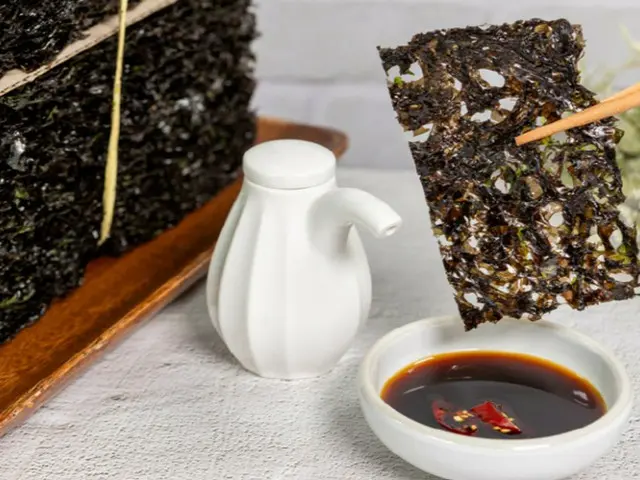South Korea's representative product was exported for the first time in history to more than 1 trillion won (approximately 110 billion yen), leading the overall good performance of seafood exports.
According to the Ministry of Oceans and Fisheries on the 5th, last year's seafood exports were worth $3.04 billion (approx.
39.7 billion yen). Although this was a slight decrease compared to the previous year ($3.105 billion, approximately 455.6 billion yen), which had the largest export result in history, it exceeded adverse conditions such as the release of Fukushima treated water and reached 3.3 billion for the second consecutive year.
They succeeded in exporting 0 billion dollars. In terms of seafood exports, Korean seaweed, tuna, and oysters led the way. South Korean Nori, which has the No. 1 global market share, sold a record $790 million last year.
(approximately 114.2 billion yen), accounting for more than a quarter of the total seafood exports. This was an increase of 22.2% compared to the previous year ($648 million, approximately 93.7 billion yen). Korea's single export value of seaweed is 1 trillion won
Last year was also the first time that it exceeded the average. Tuna, the main product of deep-sea fishing, is exported in raw form to Japan, Thailand, and other countries, selling for 560 million dollars (approximately 81 billion yen), and oysters are also exported to Japan and the United States.
86 million dollars (approximately 12.4 billion yen) was exported. Oysters are gradually gaining recognition overseas, with exports increasing by 8% from the previous year.
In order to expand seafood exports, the government started the "One Team for Fishery Food Exports" jointly between the private sector, the public sector, and the government from the beginning of last year.
and supports export companies. Ministers and vice ministers directly visit export sites nationwide, including Busan, Incheon, Jeollanam-do, and Chungcheongnam-do.
In December of last year, the company made all-out efforts, including holding a meeting with the industry to inspect the current status of exports. We also invited overseas buyers to Beijing (September) and Busan (November), China, and promoted our seafood products.
In particular, we will develop Korean seaweed, a popular export product, as a luxury food that matches the tastes of people around the world, and aim to increase exports to 1 billion dollars (approximately 144.6 billion yen) by 2027 and 2 billion dollars by 2035.
The company aims to exceed ¥289.3 billion (about ¥289.3 billion). We will develop products that can withstand high water temperatures and abnormal winter temperatures, and will spend 700 million won (approximately 76.95 million yen) on research and development (R&D) over the next three years.
The company will also conduct research to deal with the ``yellowing phenomenon,'' in which Korean seaweed turns yellow. In addition, the budget for this year's marine products export support project will be 20% compared to the previous year (8.6 billion won, approximately 945 million yen).
) was also increased to 51.5 billion won (approximately 5.6 billion yen). In addition, we will provide a 2.5-3.0% (fixed) loan of up to 5 billion won (approximately 550 million yen) per manufacturer to seafood export companies.
We also carry out projects that provide support at low interest rates. Minister of Maritime Affairs and Fisheries Kang Do-hyun said, ``Despite difficult export conditions, we were able to achieve the goal of exporting $3 billion for the second consecutive year thanks to the constant efforts of everyone in the fishing industry.''
``In 2024, we will continue to provide prompt support to export companies based on the expansion of the support budget, and we will visit the sites and maintain close communication.''
2024/01/07 21:32 KST
Copyrights(C) Edaily wowkorea.jp 78

